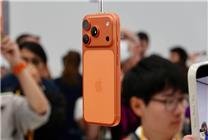The iPhone 17 Launch: Implications for Apple and Market Dynamics
- The iPhone 17 series launched with significant demand, selling out rapidly in markets, particularly in China.
- Strong pre-order numbers indicate robust growth potential for Apple in Q4, prompting increased production efforts.
- The competitive landscape is shifting, with Apple’s advanced chip technology setting new benchmarks in AI performance.
On September 20, Li Nan, founder of Numao Technology, highlighted a pivotal moment in the smartphone landscape, noting, “From understanding Xiaomi to finally becoming Xiaomi.” This statement reflects Apple’s triumph with the iPhone 17, which has quickly risen as a highly sought-after model. The impending Double 11 shopping festival promises to heighten competition among brands, making the stakes even higher.
The iPhone 17 series officially debuted on September 19, showcasing a launch event characterized by intense consumer interest. Lines formed outside Apple’s flagship stores, notably in Beijing’s Sanlitun, where hundreds queued to purchase the new model. Reports of scalpers swiftly emerged, eager to profit by reselling popular models at vastly inflated prices, underscoring the strong demand for Apple’s high-end products.
Within hours of the launch, the iPhone 17 series sold out across multiple stores. Notably, customers at the Nanjing East Road location in Shanghai experienced longer wait times than in previous years, prompting staff to set up barriers to manage the crowd. Such scenes reflect not only a successful product launch but also a significant shift in consumer behavior driven by Apple’s brand power.
Globally, delivery times for all iPhone 17 models have exceeded those of previous releases. For instance, customers ordering the Chinese version of the iPhone 17 from Apple’s official website now face an expected waiting period of one month, with deliveries anticipated by late October. This backlog points to an overwhelming demand that caught many by surprise.
Recent analysis from market observers, including Goldman Sachs, suggests that robust pre-order activity reinforces projections of an 8% revenue growth from iPhone sales in Apple’s fourth quarter. This increase is further supported by the fact that Apple’s channel inventory sits at the low end of its target range, providing additional incentives for replenishment to stimulate performance growth.
As expectations continue to soar, Apple is responding proactively to surging demand for the iPhone 17. The tech giant has informed two major suppliers to boost production by at least 30%. This decision not only signifies confidence in sales but also highlights Apple’s commitment to maintaining its position as a leader in the technology sector.
Looking ahead, the competitive landscape is evolving. Apple’s A-series chips are projected to lead in efficiency and power consumption, setting a new standard for Local Language Model (LLM) computing capabilities. This advancement bolsters Apple’s competitive edge in the realm of end-user AI technologies, positioning the company as not just a consumer electronics leader, but also a significant player in the AI field.
The launch of the iPhone 17 thus not only represents a victory for Apple in terms of sales but also resonates deeply with broader market trends. With persistent innovations and strategic adjustments in response to consumer demand, Apple is well-positioned to navigate the challenges of an increasingly competitive environment.
In conclusion, the iPhone 17’s launch can be viewed as a transformative moment for Apple, emphasizing the brand’s ability to adapt and respond to market demands while maintaining its status as a technological innovator. As we move towards the Double 11 festival, all eyes will be on Apple and its competitors as they vie for consumer attention in an ever-evolving digital landscape.







